Roman - Jewellery - Sold antiquities
Archive of sold antiquities
All artefacts sold in our gallery are fully documented in our online archive and database. Being a specialist ancient art dealer, preserving also the more recent history of each and every piece sold in our shop is at our heart. That is particularly useful for artefacts that changed owners in the meantime. Information that may have been lost in the process can be easily restored from our archives. Please do not hesitate to contact us if you need further information about ancient items that have been sold in our gallery. We can help you with reconstructing the history of ownership for those items. All information about our customers will be kept confidential, of course.-
 Workpiece of a Roman intaglio
Workpiece of a Roman intaglioThis ancient intaglio from Roman times shows a standing figure. The glass paste has a beautiful blue colour.
Price: on request Roman swastika brooch
Roman swastika broochThe swastika shape was known to the Romans as crux gammata. This brooch type of the later Imperial period was used in large parts of the Roman Empire.
Price: on request Roman crossbow brooch
Roman crossbow broochWith its silver body and the formerly gold plated bronze knobs the brooch must have been a beautiful sight. Early variant dating to the 3rd century.
Price: on request Ornate Late Roman fibula
Ornate Late Roman fibulaNicely patinated body with incised linear decorations. Well preserved multi-part spring. 2nd to 5th cent. AD.
Price: on request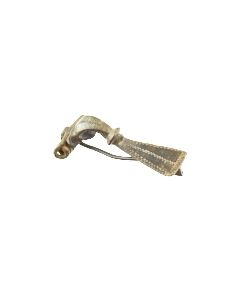 Roman fibula with decorated foot
Roman fibula with decorated footThis type of kraftig profilierte fibula has a nice trapezoidal foot with punch decor. It was popular in Central Europe during the 1st and 2nd century AD.
Price: on request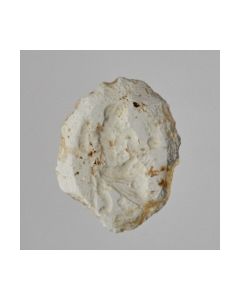 Roman intaglio with Jupiter
Roman intaglio with JupiterThe highest Roman god is sitting on a throne, leaning on the sceptre. Victoria is on his right hand. Clear glass imitating rock crystal.
Price: on request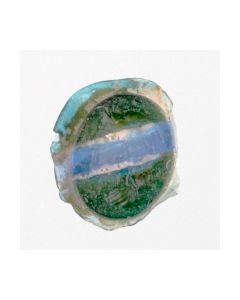 Roman intaglio made of multi coloured glass
Roman intaglio made of multi coloured glassThe intaglio is engraved with the portrait head of a woman. The piece exhibits a stunning play of colours.
Price: on request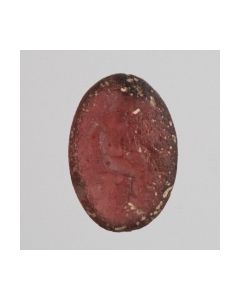 Roman intaglio from republican times
Roman intaglio from republican timesThe divine messenger and protector of the trades Hermes is engraved in violet glass. He is shown naked in his youth, resting on a rock. The hand holding the kerykeion is lowered.
Price: on request Roman intaglio with helmeted bust
Roman intaglio with helmeted bustThe small work of art is made of beautiful turquoise glass. It shows the head of a young soldier with a Corinthian helmet pushed to the back of the head.
Price: on request Ancient eye bead with elaborate glass inlays
Ancient eye bead with elaborate glass inlaysThe rare ancient eye bead is decorated with several polychrome inlays.
Price: on request Roman eye beads
Roman eye beadsGroup of miniature artworks made of mosaic glass. The Roman eye beads are from early Imperial times.
Price: on request Three ancient beads
Three ancient beadsThe group consists of one ancient eye bead with multi-coloured glass inlays and two beads from beautiful green glass. Roman Imperial times.
Price: on request Three ancient beads
Three ancient beadsThe group consists of two ancient eye beads with multi-coloured glass inlays and one bead from beautiful green glass. Roman Imperial times.
Price: on request Roman gold ring with intaglio
Roman gold ring with intaglioA lovely piece of Roman jewellery in good condition. The chalcedony intaglio shows a portrait head. Dating to the 3rd century AD.
Price: on request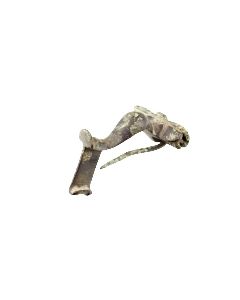 Roman knee brooch
Roman knee broochVariant of one of the most popular brooch types during Roman Imperial times. Nice preservation and lovely patina.
Price: on request Roman fibula with beautiful enamel
Roman fibula with beautiful enamelElaborate work dating to the 2nd century AD. The well preserved enamel is a testimony to the colourful world of ancient art.
Price: on request Three ancient beads
Three ancient beadsThe group consists of two ancient eye beads with multi-coloured glass inlays and one bead from beautiful yellow glass. Roman Imperial times.
Price: on request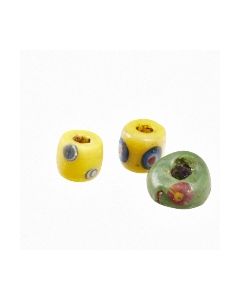 Roman eye beads
Roman eye beadsGroup of miniature artworks made of mosaic glass. The Roman eye beads are from early Imperial times.
Price: on request Three ancient beads
Three ancient beadsThe group consists of two ancient eye beads with multi-coloured glass inlays and one bead from beautiful yellow glass. Roman Imperial times.
Price: on request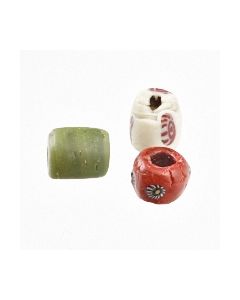 Three Roman beads
Three Roman beadsThe group consists of two Roman eye beads with multi-coloured glass inlays and one bead from beautiful green glass. Roman Imperial times.
Price: on request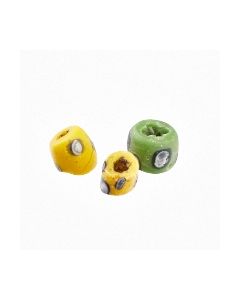 Ancient eye beads
Ancient eye beadsGroup of miniature artworks made of mosaic glass. The ancient eye beads are from early Roman Imperial times.
Price: on request Three Roman beads
Three Roman beadsOne bead from white glass. Two eye beads made of beautiful cyan coloured glass with yellow-green inlays. Early Roman.
Price: on request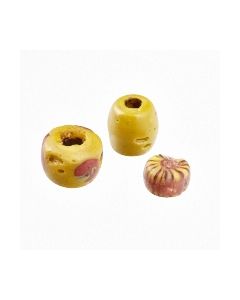 Three colourful Roman glass beads
Three colourful Roman glass beadsGroup of beautiful early Roman glass beads. Three different types, two of them polychrome.
Price: on request Three Roman beads
Three Roman beadsInteresting group of beads made from dark glass with colourful inlays. The beads are from early Roman Imperial times.
Price: on request Group of three yellow beads
Group of three yellow beadsVery nice specimen of cylindrical shape. The group features beautiful opaque glass with a bright yellow colour.
Price: on request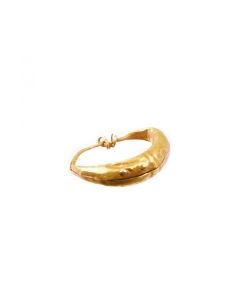 Graeco-Roman earring
Graeco-Roman earringThe decorated earrings is made of gold sheet. It is hollow inside. The type is from Northern Africa and dates to Greek or Roman times.
Price: on request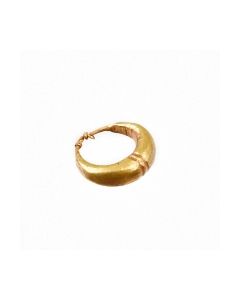 Graeco-Roman earring
Graeco-Roman earringThe decorated earrings is made of gold sheet. It is hollow inside. The type is from Northern Africa and dates to Greek or Roman times.
Price: on request Roman golden ring with eagle
Roman golden ring with eagleA lovely piece of ancient jewlery from Roman Imperial times in good condition. The intaglio shows a roman eagle. Coming with an Art Loss certificate.
Price: on request Roman golden ring with intaglio
Roman golden ring with intaglioA lovely piece of ancient jewlery in good condition. The glass intaglio shows a standing person. Coming with an Art Loss certificate.
Price: on request
 Roman silver Eros medaillon
Roman silver Eros medaillonPerfectly preserved and nicely centered piece with impressive patina. Beautiful work of art, fine details.
Price: on request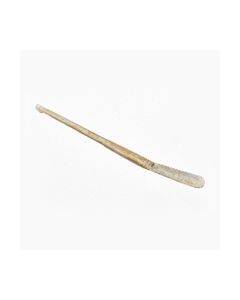 Roman strigilis with workshop mark
Roman strigilis with workshop markExcellently preserved, massive bronze, stable. Workshop mark "N" on the reverse.
Price: on request
 Bracelet with snake heads
Bracelet with snake headsMassive bronze bracelet dating to Roman Imperial times, 2nd cent. AD. Snake shaped terminals.
Price: on request Roman brooch of a swimming duck
Roman brooch of a swimming duckThree-dimensional bird shaped brooch with crescentic inlays of orange and blue enamel. Northern European type from the Roman Pricipate.
Price: on request Roman fibula from the Richard Hattatt collection
Roman fibula from the Richard Hattatt collectionLozenge-shaped ancient roman fibula. The piece is published in the standard work "Iron Age and Roman Brooches". Found in Norfolk, England.
Price: on request

